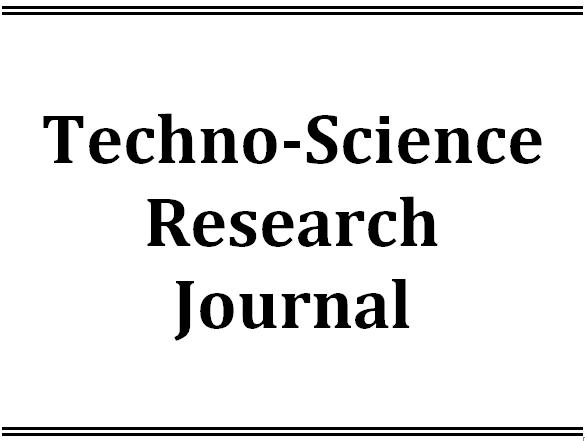Latest Issue
Effect of Different Irrigation Methods on Water Use Efficiency in Rice Soil Column Test
Published: April 30,2025Optimization of Extraction Condition for Oleoresin from Red Pepper Residues
Published: April 30,2025Bus Arrival Time Prediction Using Machine Learning Approaches
Published: April 30,2025A Deep Learning Approach for Identifying Individuals Based on Their Handwriting
Published: April 30,2025Khmer Question-Answering Model by Fine-tuning Pre-trained Model
Published: April 30,2025CNN-based Reinforcement Learning with Policy Gradient for Khmer Chess
Published: April 30,2025Temporal Variation of Groundwater Level and Quality in Tonle Sap Lake basin: Case Study in Chrey Bak Catchment
-
1. ITC
Academic Editor:
Received: January 21,2024 / Revised: / Accepted: January 21,2024 / Available online: June 01,2018
Cambodia is lack of surface water in the dry season for serving the need of people in rural area. Another potential source of water may be groundwater, a supplement source to rainwater and surface water for additional irrigation of the wet season and dry season crop. It probably serves the needs of most of the rural and urban population. Being an integral part of the hydrological cycle, its availability depends on the rainfall and recharge conditions. This study was carried out with the objective of understanding the spatial and temporal variation of groundwater level and rainfall and their correlation in a Chrey Bak catchment with around 715 km2 in area, one of the catchments in Tonle Sap Lake basin, Cambodia. The finding from this research is vital to ensure that groundwater exploitation in the catchment, as well as the whole Cambodia, proceed properly for sustainable use. The results show that the groundwater declined significantly from 2015 to 2016 due to the extreme event. Groundwater level itself in all wells mostly provides a good relationship in terms of the autocorrelation of groundwater level. Furthermore, groundwater variation is also responding fairly well to the rainfall but with some long response time based on cross-correlation analysis.

